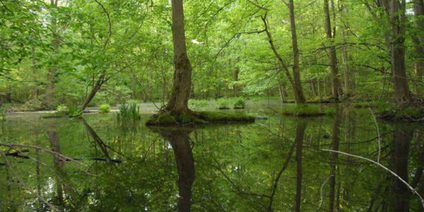
November 13, 2018, in her last annual report issued two days before the termination of her office the Environmental Commissioner of Ontario, (ECO), Dianne Saxe, issued an eloquent plea to bolster protection for southern Ontario’s besieged forests. Forming Chapter Three of her Back to Basics, the report was expressively termed, “Southern Ontario’s Disappearing Forests.” Here Saxe wrote, “Conserving forests must become a top priority in land-use planning, and creating the conditions for healthy urban trees must become a top priority in urban planning.”
At the 11th hour on November 30, 2019, Sierra Club activist, John Bacher strove to give expression to Saxe’s pleas submitting a request for review of the Local Planning Appeals Tribunal (LPAT) decision to approve Amendment 128 (OPA 128) of the Niagara Falls Official Plan. The request was made to the Executive Chair of LPAT, under Section 35 of the LPAT Act.
Saxe’s report warned that “With so little forest cover remaining on the landscape, each incremental loss has big impacts on the landscape, each incremental loss has big impacts on the services these forests provide to society and the wildlife they support.” These words ring true especially for the Thundering Waters Forests in Niagara Falls, threatened by future site alteration and development which would be set in motion if the request to review OPA 128 is denied. Massive tree cutting would take place on over a hundred acres of land. These would impact the habitat of some 13 Species At Risk.
Species At Risk impacted by OPA 128 include five Endangered species. These are the Acadian Flycatcher, Little Brown Bat, Northern Myotis, and Eastern Small Footed Myotis, (Endangered Bats). Threatened species are Kentucky Coffee Tree, Dense Blazing Star, Barn Swallow, and Chimney Swift. At-Risk Species include the Midland Painted Turtle, Snapping Turtle, Wood Thrush, Eastern Wood-Pewee, Great Plains Lady's-tresses (an orchid).
What is most ominous in view of Saxe’s warning is that the ECO views the protection of the Provincial Policy Statement on Provincially Significant Woodlands as protecting them. However, the ecological consultants for the applicant for the OPA 128 claims that these lands have lost or will lose their woodland characteristics from the combination of Emerald Ash Borer wiping out ash trees and resulting succession by an invasive exotic Buckthorn. Such claims were refuted by a December 11, 2017 letter to the Niagara Falls Planning Department by the Ministry of Natural Resources and Forestry. (MNRF) These letters were only obtained by Bacher with the help of the Local Planning Appeals Tribunal Support Centre – a resource since terminated by the government of Premier Doug Ford.
The ECO’s “Southern Ontario’s Disappearing Forests” draws attention to a major loophole in Ontario’s otherwise strong policies to protect forested wetlands. Saxe warned that “When a road bisects a swath of forest, not only does the road directly displace forested area, it also creates new forest edges, which have negative impacts on interior forest-dwelling species. For every tree directly displaced by that road, several more are impacted by soil compaction, air pollution, exhaust, road salt, and increased exposure to wind and sun, stressing them and leaving them less vigorous.” Meaning these smaller trees with smaller leaf-area will provide lesser benefits (eg. lower transpiration levels, less carbon storage, less water, and air filtration).
OPA 128 calls for roads to be put through a number of forested wetlands. These provide summer basking habitat for the Midland Painted and Snapping Turtle and the declining Bullfrog. The battle to save the Thundering Water’s forest is becoming a test case for the ECO’s warnings of the threats posed to “Southern Ontario’s Disappearing Forests”.
Photo by John Bacher also used on OntarioNature.org
